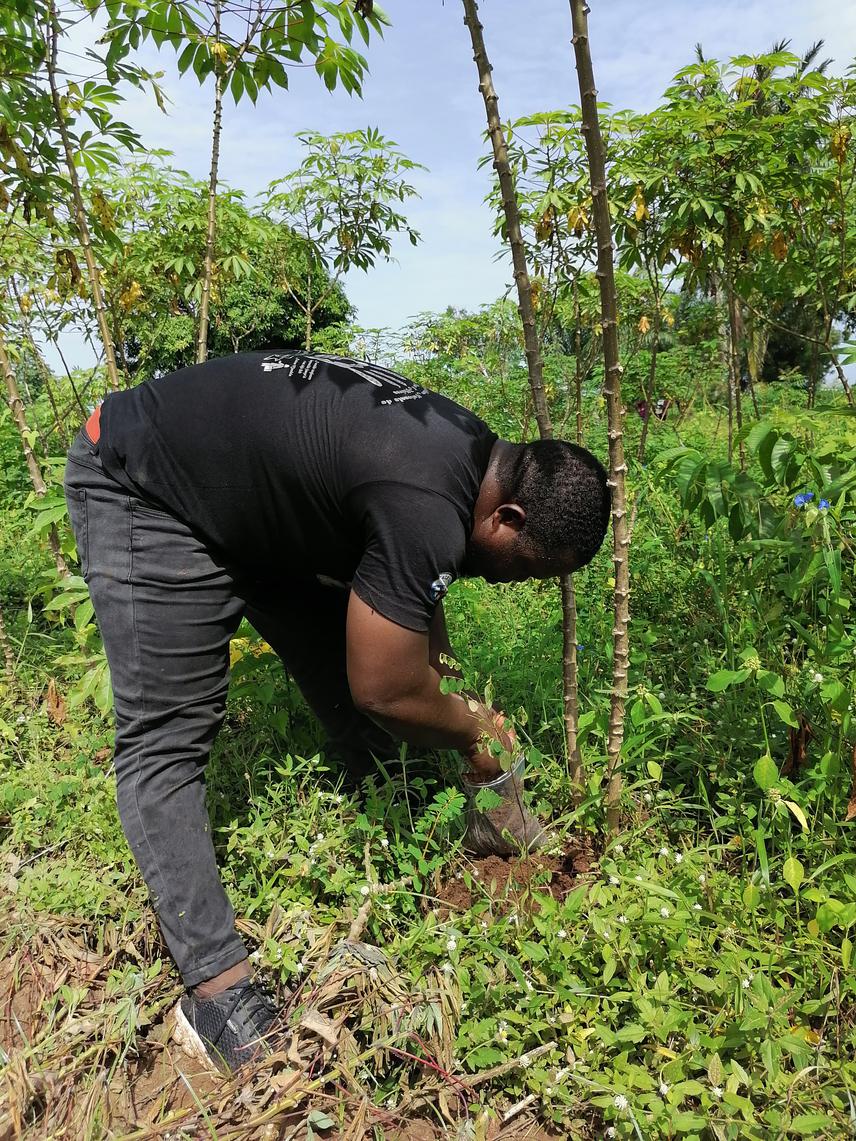Kassim Tchan Issifou
Although known to play a pivotal role in global ecosystem services, including regulating the climate and water cycle and maintaining biodiversity, tropical forests are under constant threat due to deforestation and degradation driven by the expansion of agriculture, mining and infrastructure (Bebbington et al. 2018). Human pressure on tropical forests increases and highlights the need to conserve high-quality habitats, especially in global biodiversity hotspots.

Sampling of agricultural soils in southern Benin. © Tchan Issifou Kassim.
In Benin, more specifically in the Toui-Kilibo (FCTK) forest reserve, a diachronic study of land use showed regression of woodland (32%), dense forests (10%) and gallery forests (30%) to the detriment of agricultural fields and fallow (76%) and settlements (85%) (Igué et al. 2010). This drastic degradation of forests is due not only to the illegal exploitation of trees of economic importance but above all to unsuitable farming practices such as the use of chemical fertilizers (Dewitte et al. 2012). Willis et al. (2013) showed the harmful effect of agricultural inputs (pesticides, chemical fertilizers) not only on soil conservation and its ecosystem services (pollution of agricultural products, food insecurity) but also on the colonization and sporulation of soil microorganisms and their disappearance. Among these soil microorganisms vulnerable to human actions are the arbuscular mycorrhizal fungi (AMF), for which even moderate chemical input reduces spore density by 50% in five years (Gosling et al. 2006, Tedersoo et al. 2021).
However, despite the importance of AMF in ecosystem functioning through improved growth and nutrition parameters and protection of plants from pathogens through mycorrhizal symbiosis, there is increasing attention on aboveground biodiversity especially plants and animals forgetting those belowground (Tedersoo et al. 2022). It is therefore essential to determine the diversity of AMFs and the potential threats to their entire habitat in order to promote effective actions for their conservation. To achieve this, our project aims to document the impact of different forest soil management methods (agricultural fields, fallow and natural forests) on the functional diversity of AMF. More specifically, it will be:
(i) Conducting an ethnoecological survey among farmers to record all endogenous agricultural practices that are threatening the survival of AMF,
(ii) Investigating the diversity, distribution and abundance of AMF according to the different
land-uses and the major agricultural methods recorded,
(iii) Identifying the rare and threatened AMF strains to conserve them in an ex-situ bank of
spores,
(iv) Raising awareness to farmers on the best agricultural practices for conserving the natural
habitats of AMF.